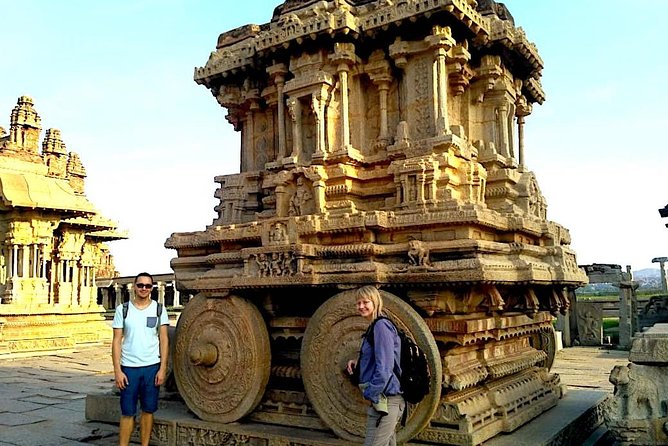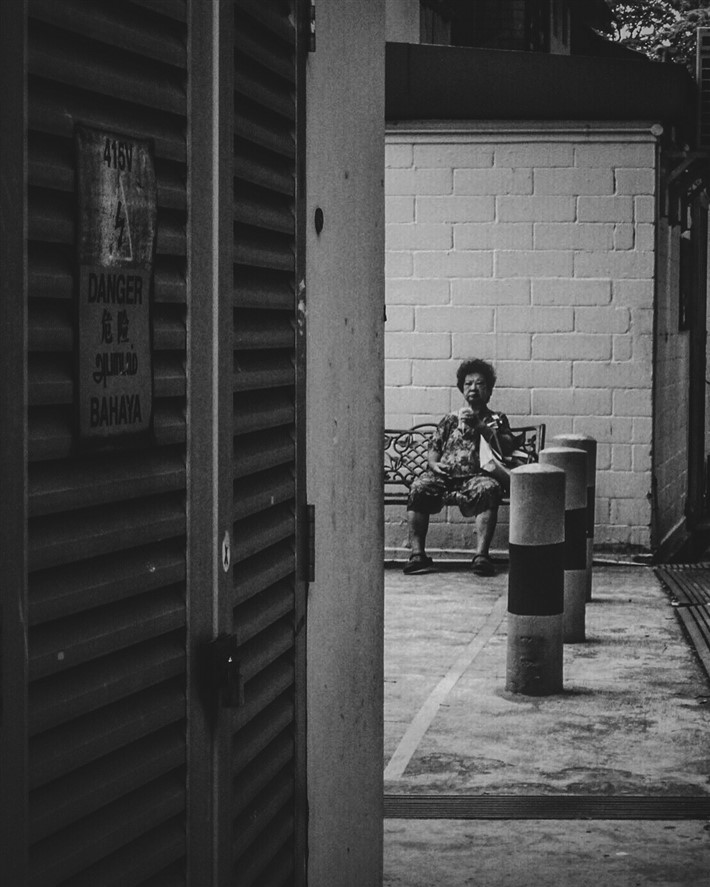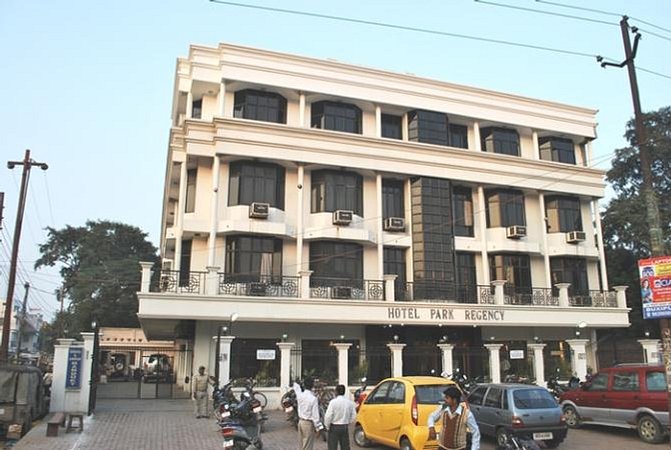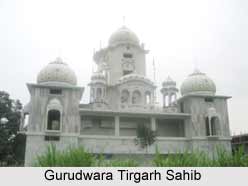Jhansi, a city with a rich historical tapestry, lies in northern India. Known for its brave queen, Rani Lakshmibai, Jhansi holds a special place in Indian history.
Nestled in the state of Uttar Pradesh, Jhansi is a blend of history and culture. Its forts and monuments narrate tales of valor. The city played a key role in the Indian Rebellion of 1857. Visitors often feel the echoes of the past in its streets.
The historic Jhansi Fort stands as a symbol of resistance and courage. Exploring Jhansi offers a chance to step back in time. Beyond its history, the city has vibrant markets and warm local cuisine. For those interested in India’s past, Jhansi is a must-visit. It connects the present with the glories of yesteryears.
Ancient Beginnings
Jhansi is more than just a name from history books. This city, known for its valor and rich heritage, has roots that delve deep into ancient times. Understanding these beginnings can offer a fresh perspective on its significance. Let’s explore the early settlements and mythological connections of Jhansi to uncover its fascinating past.
Early Settlements
Early settlements in Jhansi date back thousands of years. Archeological evidence suggests that this region was home to various tribal communities. These early inhabitants laid the foundations of what would become a bustling city.
Imagine a time when small settlements thrived along riverbanks. People lived in harmony with nature, cultivating the land and trading goods. These communities left behind pottery, tools, and artifacts that tell their story. Visiting local museums in Jhansi can give you a glimpse into their lives and lifestyles.
Have you ever thought about how ancient people lived in this region? Their way of life was simpler but no less important. They set the stage for future generations, including the renowned Rani Lakshmibai, who would later defend Jhansi with unmatched bravery.
Mythological Connections
Jhansi isn’t just rooted in history—it’s also woven into the mythological tapestry of India. According to legend, this region was part of the Chedi Kingdom mentioned in the epic Mahabharata. This connection adds an intriguing layer to Jhansi’s ancient beginnings.
When you walk through the streets of Jhansi, you might feel a sense of timelessness. It’s fascinating to think that these very grounds could have witnessed events described in age-old stories. Could the heroes of Mahabharata have traversed this land?
Mythology often blurs the lines between history and legend. But one thing is clear: Jhansi’s roots are as deep as they are diverse. Exploring these stories can deepen your appreciation for the city’s rich cultural fabric.
So, next time you visit Jhansi or read about it, remember its ancient beginnings. Reflect on the early settlers and the mythological tales that give this city its unique identity. What new insights might you discover about this historical gem?

Credit: www.facebook.com
The Rise Of Jhansi
Jhansi, located in northern India, has a storied past. Its rise began in the 18th century. This period marked significant changes. These transformations made Jhansi a prominent city.
The city’s history is filled with tales of valor. It played a crucial role in India’s independence. Queen Lakshmibai led Jhansi’s resistance during the 1857 revolt. Her bravery is remembered with pride.
Jhansi’s strategic importance and architectural marvels contributed to its rise. These factors shaped the city’s identity. Let’s explore them further.
Strategic Importance
Jhansi’s location made it a focal point. It sits between major trade routes. This position helped it flourish. The city connected north and south India. Traders found Jhansi accessible and convenient.
During the British era, Jhansi was vital. It served as a military stronghold. The British built forts here. These forts strengthened their control. Jhansi’s strategic importance grew during the revolt of 1857. It became a center of resistance.
Architectural Marvels
Jhansi is home to stunning architecture. The Jhansi Fort stands as a testament. Built in the 17th century, it showcases Mughal design. The fort symbolizes strength and resilience.
Rani Mahal is another marvel. This palace reflects rich heritage. It served as Queen Lakshmibai’s residence. Its intricate carvings attract visitors.
St. Jude’s Shrine is a blend of cultures. It represents colonial architecture. These landmarks highlight Jhansi’s architectural brilliance.
Explore these marvels to experience Jhansi’s legacy. Each structure tells a story. They provide a glimpse into the city’s glorious past.
Rani Lakshmibai
Rani Lakshmibai, also known as the Queen of Jhansi, is one of India’s most iconic and inspirational figures. Her life and legacy continue to inspire generations with tales of courage, resilience, and leadership. Let’s delve into her remarkable journey.
Early Life
Born as Manikarnika Tambe in Varanasi in 1828, Rani Lakshmibai was raised in a Brahmin family. From a young age, she was trained in martial arts, horse riding, shooting, and sword fighting. These skills would later become crucial in her fight against British rule.
Her early education and upbringing were progressive for her time. Her father, Moropant Tambe, ensured she received an education that was rare for girls in that era. He also instilled in her a sense of independence and bravery. Have you ever thought about how your upbringing shapes your future?
Role In The Rebellion
Rani Lakshmibai’s role in the 1857 Rebellion, also known as the First War of Indian Independence, was pivotal. After the death of her husband, Raja Gangadhar Rao, the British East India Company annexed Jhansi under the Doctrine of Lapse. Refusing to surrender Jhansi, she declared, “Main Apni Jhansi Nahi Doongi” (I will not give up my Jhansi).
With her army, she defended Jhansi fiercely. Despite being outnumbered, her strategic acumen and leadership were evident. She led her troops into battle, displaying unparalleled valor. Can you imagine leading an army at such a young age?
Her courage became legendary. Even the British admired her spirit. She fought until her last breath in 1858, becoming a symbol of resistance against oppression. Her story reminds us that determination and courage can turn the tide of history.
Rani Lakshmibai’s legacy lives on, reminding us to stand firm in our beliefs and fight for justice. How does her story inspire you in your daily life?

Credit: www.reddit.com
The Revolt Of 1857
Jhansi played a crucial role in the Revolt of 1857. Led by Rani Lakshmibai, the forces bravely resisted British rule. Her courage inspired many and made Jhansi a symbol of resistance.
The Revolt of 1857, also known as the First War of Indian Independence, was a significant uprising against the British East India Company’s rule in India. Jhansi played a pivotal role in this rebellion, with its valiant queen, Rani Lakshmibai, leading the charge. Her courage and leadership have become legendary. Let’s delve deeper into the battle strategies and legacy of the uprising in Jhansi.Battle Strategies
Rani Lakshmibai’s battle strategies were nothing short of remarkable. She understood the importance of using the terrain to her advantage. Jhansi’s fort, with its high walls and strategic location, became the heart of resistance. She organized her troops efficiently, ensuring that every soldier knew their role. Her tactics were innovative for the time. She utilized guerilla warfare, striking the British forces unexpectedly and then retreating. This kept the British on their toes and disrupted their plans. Rani Lakshmibai also formed alliances with neighboring rulers and rebel leaders. This unity was crucial. The combined forces posed a significant threat to the British. One notable instance was the alliance with Tatya Tope, which intensified the resistance. Have you ever wondered how you would respond in the face of such overwhelming odds? Rani Lakshmibai’s determination teaches us the power of resilience and strategic thinking.Legacy Of The Uprising
The legacy of the 1857 uprising in Jhansi is profound. Rani Lakshmibai’s heroism is celebrated to this day. She became a symbol of resistance and empowerment for future generations. Her story is an inspiration for anyone fighting against oppression. Jhansi itself transformed into a beacon of hope and resilience. The fort and other historical sites attract numerous visitors who wish to pay homage to the brave queen and her soldiers. Visiting Jhansi offers a unique opportunity to walk through history and feel the spirit of resistance. The uprising also brought significant changes in British policies. The British Crown took direct control of India from the East India Company. This marked the beginning of a new era in Indian history. As you explore Jhansi, you can reflect on these pivotal moments. How does learning about this history inspire you in your own life? The courage and determination of Jhansi’s people during the revolt of 1857 remind us that it’s possible to stand up against any challenge with the right mindset. So, next time you face a challenge, think of Jhansi and Rani Lakshmibai. Their legacy lives on, inspiring us to be resilient and strategic in our own battles.Cultural Heritage
Jhansi, a city in Uttar Pradesh, India, is a treasure trove of cultural heritage. Known for its historical significance and the legendary Rani Lakshmi Bai, Jhansi offers a unique blend of traditions and modernity. The city’s cultural essence is reflected in its festivals, cuisine, and everyday life. Let’s dive into the heart of Jhansi’s cultural heritage.
Traditional Festivals
Festivals in Jhansi are a vibrant expression of its rich cultural tapestry. One of the most celebrated festivals is Ram Navami. During this festival, the entire city comes alive with colorful processions and devotional songs. You can witness the locals dressed in traditional attire, participating with fervor.
Another significant festival is Jhansi Mahotsav. It is a week-long celebration showcasing local arts, crafts, and performances. The festival offers you a glimpse into the traditional dance forms like Kathak and folk music that have been passed down through generations.
Ever attended a Diwali celebration in Jhansi? The city sparkles with lights, and the aroma of sweets fills the air. Every home, street, and market is adorned with decorations, making it a sight to behold.
Local Cuisine
The culinary landscape of Jhansi is as diverse as its festivals. A trip to Jhansi is incomplete without tasting its local delicacies. One must-try dish is Bhutte ki Khees, a savory corn dish cooked with spices and garnished with coriander. It’s a perfect blend of flavors that will tantalize your taste buds.
If you have a sweet tooth, then Jhansi’s Peda is a must. Made from condensed milk and sugar, this sweet treat is famous across the region. You can find it in almost every sweet shop in the city.
Don’t miss out on the street food in Jhansi. Chaat varieties such as Pani Puri and Aloo Tikki are local favorites. They are a burst of flavors and will leave you craving for more.
Have you ever wondered how food can tell a story? In Jhansi, each dish narrates the tale of its cultural roots. The spices, the preparation methods, and even the presentation are all part of a long-standing tradition.
So, the next time you visit Jhansi, immerse yourself in its cultural heritage. Participate in a local festival, savor the traditional cuisine, and let the city’s rich history unfold before you. What aspects of Jhansi’s cultural heritage intrigue you the most?

Credit: en.wikipedia.org
Historic Landmarks
Jhansi, a city with a rich history, is home to several historic landmarks that tell stories of valor, culture, and heritage. These landmarks are a testament to the city’s glorious past and offer a fascinating glimpse into its historical significance. Whether you’re a history buff or just curious, Jhansi’s historic landmarks are sure to captivate your imagination.
Jhansi Fort
Perched atop a hill, Jhansi Fort is an emblem of strength and resilience. Built in the 17th century, the fort is not just a structure but a symbol of the indomitable spirit of Rani Lakshmibai, the Queen of Jhansi. As you walk through its massive gates, you can almost hear the clashing swords and the battle cries that once echoed within its walls.
The fort’s architecture is a blend of Bundela and Maratha styles, making it a visual delight. The panoramic view of the city from the top is breathtaking, especially at sunset. Don’t miss the museum inside the fort, which houses artifacts, weapons, and relics from the period.
Have you ever imagined what it would be like to stand where historical figures once stood? Visiting Jhansi Fort offers you that unique opportunity. The experience is both humbling and exhilarating.
Temples And Monuments
Jhansi is also home to several temples and monuments that reflect its rich cultural tapestry. The Rani Mahal, for instance, is a beautiful palace that once served as the residence of Rani Lakshmibai. Its intricate carvings and colorful murals are a feast for the eyes.
Another must-visit is the Mahalakshmi Temple. Dedicated to the goddess Lakshmi, the temple is not just a place of worship but also a marvel of architecture. The temple’s serene ambiance provides a perfect escape from the hustle and bustle of city life.
While exploring these landmarks, you might wonder about the lives of the people who built and worshipped at these places. What were their dreams, their struggles? Such thoughts make the visit even more enriching.
Remember, each landmark in Jhansi has a story to tell. Are you ready to listen?
So, next time you plan a trip, consider Jhansi. Its historic landmarks offer more than just sightseeing—they offer a journey through time.
Modern Jhansi
Jhansi blends history with modernity, creating a vibrant cityscape. Historic forts and new infrastructures coexist, showcasing its rich heritage and growth.
Jhansi, a city rich in history, has evolved significantly over the years. Today, it stands as a vibrant blend of old-world charm and modern convenience. Let’s explore what makes Modern Jhansi a fascinating place.Urban Development
Modern Jhansi has seen a surge in urban development. The city now boasts well-planned residential areas, shopping complexes, and improved infrastructure. New roads and flyovers have reduced traffic congestion, making commutes smoother and quicker. Did you know? Jhansi is integrating smart city features like efficient waste management and better public transportation. Imagine living in a city where technology simplifies daily life. Jhansi’s growth isn’t just limited to infrastructure. The education sector has flourished with new schools, colleges, and training centers. This development ensures that the younger generation is well-equipped for the future.Tourism Attractions
Despite its modern advancements, Jhansi has preserved its historical treasures. The city is home to several must-visit attractions. Jhansi Fort: This iconic fort stands as a testament to the bravery of Rani Lakshmibai. Walking through its corridors, you can almost feel the echoes of history. Rani Mahal: Once the residence of Rani Lakshmibai, this palace now serves as a museum. It showcases artifacts from the era, giving you a glimpse into the past. St. Jude’s Shrine: A unique blend of history and spirituality, this shrine attracts visitors from all faiths. It’s a peaceful retreat amidst the bustling city. For nature lovers, Jhansi offers Barua Sagar and Orchha, which are perfect for weekend getaways. These spots provide serene landscapes and a break from urban life. Have you explored Jhansi’s modern side? What are your favorite places in this evolving city? Feel free to share your thoughts in the comments!Preserving The Past
Jhansi, the land of valor and rich history, is a treasure trove of cultural heritage. The city’s historical significance is immense, featuring landmarks that recount tales of bravery and resilience. Preserving this past is not just a responsibility but a tribute to the legacy of Jhansi. Let’s explore the efforts made by local authorities and the community to keep the past alive.
Efforts By Local Authorities
The local authorities in Jhansi have been proactive in preserving the city’s historical essence. One of their significant initiatives is the restoration of the Jhansi Fort. This fort, a symbol of resistance during the 1857 uprising, has been meticulously maintained to ensure its structural integrity and historical relevance.
Moreover, the Jhansi Museum has been revamped to offer a more interactive experience. It now includes digital displays and guided tours, making history accessible and engaging for all age groups. The authorities have also organized heritage walks, guiding visitors through the ancient streets of Jhansi and narrating stories that bring the past to life.
Community Initiatives
Local communities have played a crucial role in preserving Jhansi’s history. Residents have formed heritage clubs that actively participate in cleaning and maintaining historical sites. These clubs often organize events where older residents share their stories, creating a living history that connects generations.
Schools in Jhansi have incorporated local history into their curriculum. Students are encouraged to visit historical sites and participate in projects that explore the city’s past. This hands-on learning not only educates but instills a sense of pride and responsibility towards preserving their heritage.
Even small businesses contribute by promoting local crafts and traditional art forms. By supporting these businesses, you help keep the culture and history of Jhansi alive. Have you ever wondered how your small actions can make a big difference?
Every effort, big or small, counts towards preserving the rich history of Jhansi. Whether you are a local or a visitor, you can play a part in this noble endeavor. Next time you visit, take a moment to appreciate the efforts that have gone into preserving the past and think about what you can do to contribute.
Frequently Asked Questions
Why Is Jhansi So Famous?
Jhansi is famous for its historical significance and the bravery of Rani Lakshmibai. The city played a key role in the 1857 Indian Rebellion.
What Language Do They Speak In Jhansi?
They speak Hindi in Jhansi. Bundeli, a regional dialect, is also commonly spoken by the local population.
What Is The Meaning Of Jhansi?
Jhansi means “a place of gold. ” It is a historic city in Uttar Pradesh, India. Famous for its role in India’s freedom struggle.
What Is Famous Of Jhansi?
Jhansi is famous for its historic Jhansi Fort and the bravery of Rani Lakshmibai during the 1857 rebellion.
Conclusion
Jhansi’s rich history and vibrant culture offer much to explore. From its majestic fort to the tales of bravery, every corner tells a story. Visitors can enjoy local cuisine and shop at bustling markets. Jhansi blends tradition with modernity, creating a unique experience.
Discover the charm and warmth of this incredible city. Plan your visit to Jhansi and embrace its heritage. Every moment here creates lasting memories. Jhansi awaits with open arms and countless adventures.
{ “@context”: “https://schema.org”, “@type”: “FAQPage”, “mainEntity”: [ { “@type”: “Question”, “name”: “Why is Jhansi so famous?”, “acceptedAnswer”: { “@type”: “Answer”, “text”: “Jhansi is famous for its historical significance and the bravery of Rani Lakshmibai. The city played a key role in the 1857 Indian Rebellion.” } } , { “@type”: “Question”, “name”: “What language do they speak in Jhansi?”, “acceptedAnswer”: { “@type”: “Answer”, “text”: “They speak Hindi in Jhansi. Bundeli, a regional dialect, is also commonly spoken by the local population.” } } , { “@type”: “Question”, “name”: “What is the meaning of Jhansi?”, “acceptedAnswer”: { “@type”: “Answer”, “text”: “Jhansi means \”a place of gold.\” It is a historic city in Uttar Pradesh, India. Famous for its role in India’s freedom struggle.” } } , { “@type”: “Question”, “name”: “What is famous of Jhansi?”, “acceptedAnswer”: { “@type”: “Answer”, “text”: “Jhansi is famous for its historic Jhansi Fort and the bravery of Rani Lakshmibai during the 1857 rebellion.” } } ] }




